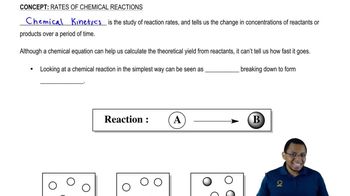Textbook Question
Why does increasing concentration generally increase the rate of a reaction?
 Verified step by step guidance
Verified step by step guidance Verified video answer for a similar problem:
Verified video answer for a similar problem:



 1:07m
1:07mMaster Rate of Reaction Concept 1 with a bite sized video explanation from Jules
Start learning